An Energy Efficient Technique Using Electric Active Shielding for Capacitive Coupling Intra-Body Communication
Abstract
:1. Introduction
2. Effect of Electrodes Parasitic Capacitance and Electric Active Shielding
3. Validation Using Finite Element Method
3.1. FEM Simulation Model and Setup
3.2. Simulation Results and Discussion
4. Experimental Validation
4.1. Transmitter Device
4.2. Measurement Setup
4.3. Results and Discussion
5. Conclusions
Author Contributions
Conflicts of Interest
References
- Bae, J.; Yoo, H.J. The Effects of Electrode Configuration on Body Channel Communication Based on Analysis of Vertical and Horizontal Electric Dipoles. IEEE Trans. Microwave Theory Tech. 2015, 63, 1409–1420. [Google Scholar] [CrossRef]
- Cho, N.; Yan, L.; Bae, J.; Yoo, H.-J. A 60 kb/s-10 Mb/s Adaptive Frequency Hopping Transceiver for Interference-Resilient Body Channel Communication. IEEE J. Solid-State Circuits 2009, 44, 708–717. [Google Scholar] [CrossRef]
- Callejon, M.A.; Naranjo-Hernandez, D.; Reina-Tosina, J.; Roa, L.M. A Comprehensive Study Into Intrabody Communication Measurements. IEEE Trans. Instrum. Meas. 2013, 62, 2446–2455. [Google Scholar] [CrossRef]
- Song, Y.; Zhang, K.; Hao, Q.; Hu, L.X.; Wang, J.W.; Shang, F.Z. A Finite-Element Simulation of Galvanic Coupling Intra-Body Communication Based on the Whole Human Body. Sensors 2012, 12, 13567–13582. [Google Scholar] [CrossRef] [PubMed]
- Gao, Y.M.; Wu, Z.M.; Pun, S.H.; Mak, P.U.; Vai, M.I.; Du, M. A Novel Field-Circuit FEM Modeling and Channel Gain Estimation for Galvanic Coupling Real IBC Measurements. Sensors 2016, 16, 471. [Google Scholar] [CrossRef] [PubMed]
- Nguyen, X.T.; Muramatsu, D.; Sasaki, K. Measurement of Human Body Communication Transmission Characteristics at 20 MHz. In Proceedings of the 2015 9th International Symposium on Medical Information and Communication Technology (Ismict), Kamakura, Japan, 24–26 March 2015. [Google Scholar]
- Callejon, M.A.; Reina-Tosina, J.; Naranjo-Hernandez, D.; Roa, L.M. Galvanic Coupling Transmission in Intrabody Communication: A Finite Element Approach. IEEE Trans. Biomed. Eng. 2014, 61, 775–783. [Google Scholar] [CrossRef] [PubMed]
- Xu, R.; Zhu, H.; Yuan, J. Electric-field Intrabody Communication Channel Modeling with Finite-element Method. IEEE Trans. Biomed. Eng. 2011, 58, 705–712. [Google Scholar] [PubMed]
- Cho, N.; Yoo, J.; Song, S.-J.; Lee, J.; Jeon, S.; Yoo, H.-J. The Human Body Characteristics as a Signal Transmission Medium for Intrabody Communication. IEEE Trans. Microwave Theory Tech. 2007, 55, 1080–1086. [Google Scholar] [CrossRef]
- Nie, Z.D.; Ma, J.J.; Li, Z.C.; Chen, H.; Wang, L. Dynamic Propagation Channel Characterization and Modeling for Human Body Communication. Sensors 2012, 12, 17569–17587. [Google Scholar] [CrossRef] [PubMed]
- Zhu, X.Q.; Guo, Y.X.; Wu, W. Investigation and Modeling of Capacitive Human Body Communication. IEEE Trans. Biomed. Circuits Syst. 2017, 11, 474–482. [Google Scholar] [CrossRef] [PubMed]
- Park, J.; Garudadri, H.; Mercier, P.P. Channel Modeling of Miniaturized Battery-Powered Capacitive Human Body Communication Systems. IEEE Trans. Biomed. Eng. 2017, 64, 452–462. [Google Scholar] [CrossRef] [PubMed]
- Pereira, M.D.; Alvarez-Botero, G.A.; Rangel de Sousa, F. Characterization and Modeling of the Capacitive HBC Channel. IEEE Trans. Instrum. Meas. 2015, 64, 2626–2635. [Google Scholar] [CrossRef]
- Lucev, Ž.; Krois, I.; Cifrek, M. A Capacitive Intrabody Communication Channel from 100 kHz to 100 MHz. IEEE Trans. Instrum. Meas. 2012, 61, 3280–3289. [Google Scholar] [CrossRef]
- Zhang, K.; Hao, Q.; Song, Y.; Wang, J.W.; Huang, R.B.; Liu, Y. Modeling and Characterization of the Implant Intra-Body Communication Based on Capacitive Coupling Using a Transfer Function Method. Sensors 2014, 14, 1740–1756. [Google Scholar] [CrossRef] [PubMed]
- Chen, X.M.; Mak, P.U.; Pun, S.H.; Gao, Y.M.; Lam, C.T.; Vai, M.I.; Du, M. Study of Channel Characteristics for Galvanic-Type Intra-Body Communication Based on a Transfer Function from a Quasi-Static Field Model. Sensors 2012, 12, 16433–16450. [Google Scholar] [CrossRef] [PubMed]
- Wegmueller, M.; Felber, N.; Fichtner, W.; Lehner, A.; Hess, O.; Froehlich, J.; Kuster, N.; Reutemann, R.; Oberle, M. Measurement system for the characterization of the human body as a communication channel at low frequency. In Proceedings of the 2005 IEEE Engineering in Medicine and Biology 27th Annual Conference, Shanghai, China, 1–4 September 2005; pp. 3502–3505. [Google Scholar]
- Okamoto, E.; Kato, Y.; Kikuchi, S.; Mitamura, Y. Measurement of Electrode-tissue Interface Impedance for Improvement of a Transcutaneous Data Transmission Using Human Body as Transmission Medium. Bio-med. Mater. Eng. 2014, 24, 1735–1742. [Google Scholar]
- Harikumar, P.; Kazim, M.I.; Wikner, J.J. An Analog Receiver Front-End for Capacitive Body-Coupled Communication. In Proceedings of the NORCHIP 2012, Cpenhagen, Denmark, 12–13 November 2012; pp. 1–4. [Google Scholar]
- Li, J.; Liu, Y.; Nie, Z.; Qin, W.; Pang, Z.; Wang, L. An Approach to Biometric Verification Based on Human Body Communication in Wearable Devices. Sensors 2017, 17, 125. [Google Scholar] [CrossRef] [PubMed]
- Zimmerman, T.G. Personal area networks: Near-field Intrabody Communication. IBM Syst. J. 1996, 35, 609–617. [Google Scholar] [CrossRef]
- Xu, R.; Ng, W.C.; Zhu, H.; Shan, H.; Yuan, J. Equation Environment Coupling and Interference on the Electric-field Intrabody Communication Channel. IEEE Trans. Biomed. Eng. 2012, 59, 2051–2059. [Google Scholar] [CrossRef] [PubMed]
- Haga, N.; Motojima, K.; Shinagawa, M.; Kado, Y. Equivalent-Circuit Expression of Environmental Noise Electric Fields in Intrabody Communication Channels. IEEE Trans. Electromagn. Compat. 2016, 58, 294–306. [Google Scholar] [CrossRef]
- Bae, J.; Cho, H.; Song, K.; Lee, H.; Yoo, H.-J. The Signal Transmission Mechanism on the Surface of Human Body for Body Channel Communication. IEEE Trans. Microwave Theory Tech. 2012, 60, 582–593. [Google Scholar] [CrossRef]
- Xie, Y.; Li, Y.L.; Huang, Z.H.; Cui, Z.Z. Preliminary Study of Rain Effect on Channel Gain of Body Area Communication. In Proceedings of the 2009 Joint Conferences on Pervasive Computing (JCPC), Tamsui, Taipei, Taiwan, 3–5 December 2009; pp. 657–660. [Google Scholar]
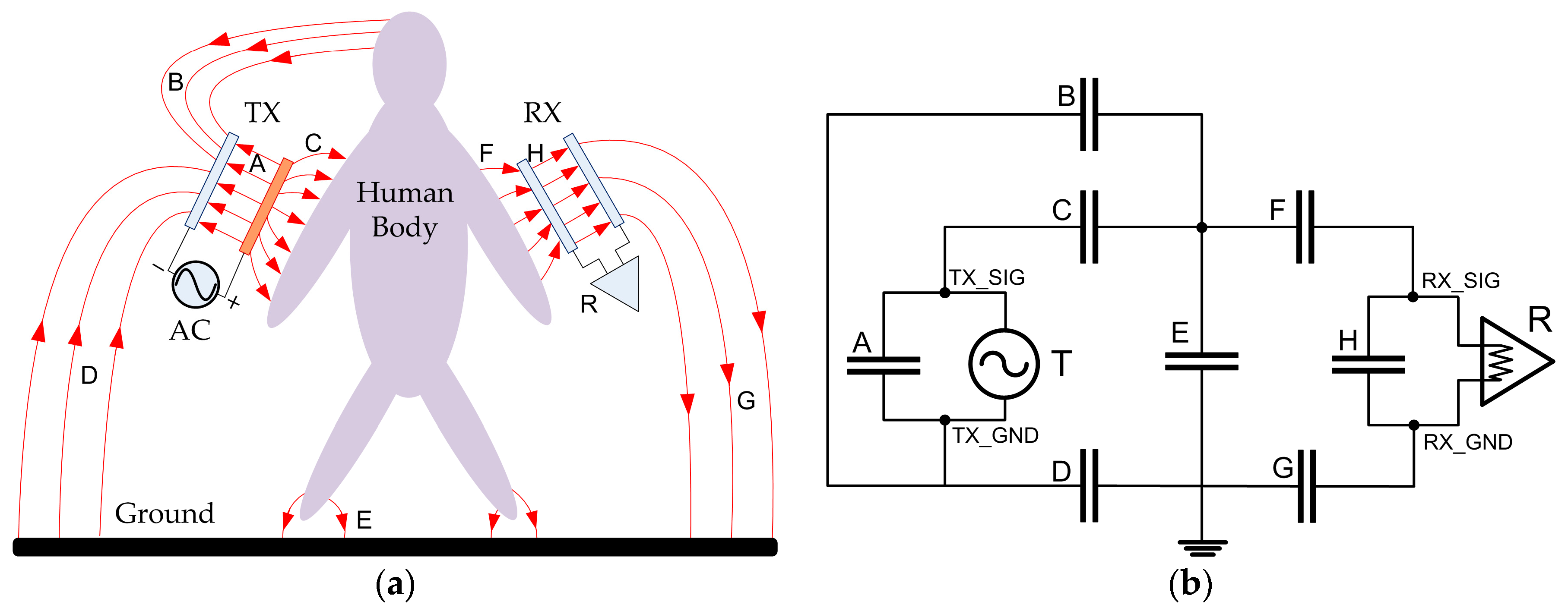
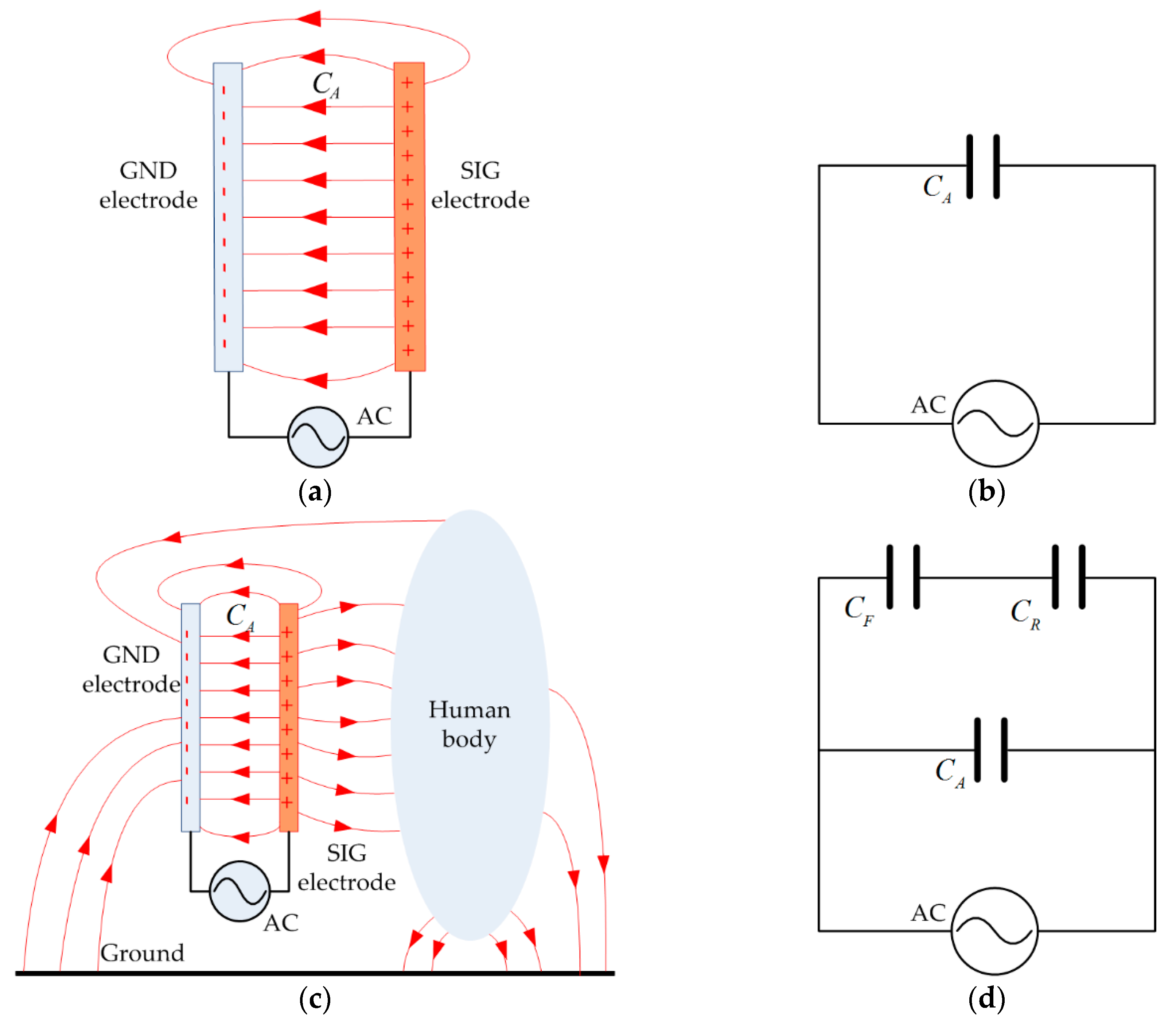
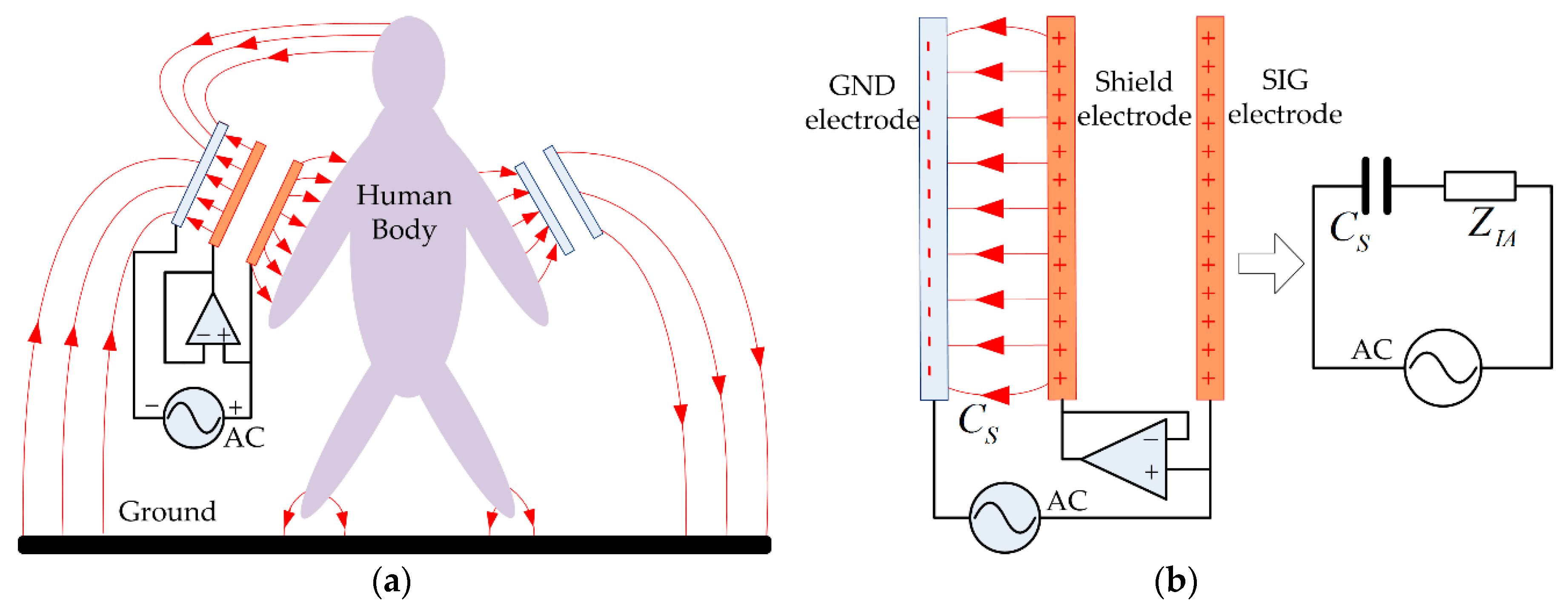
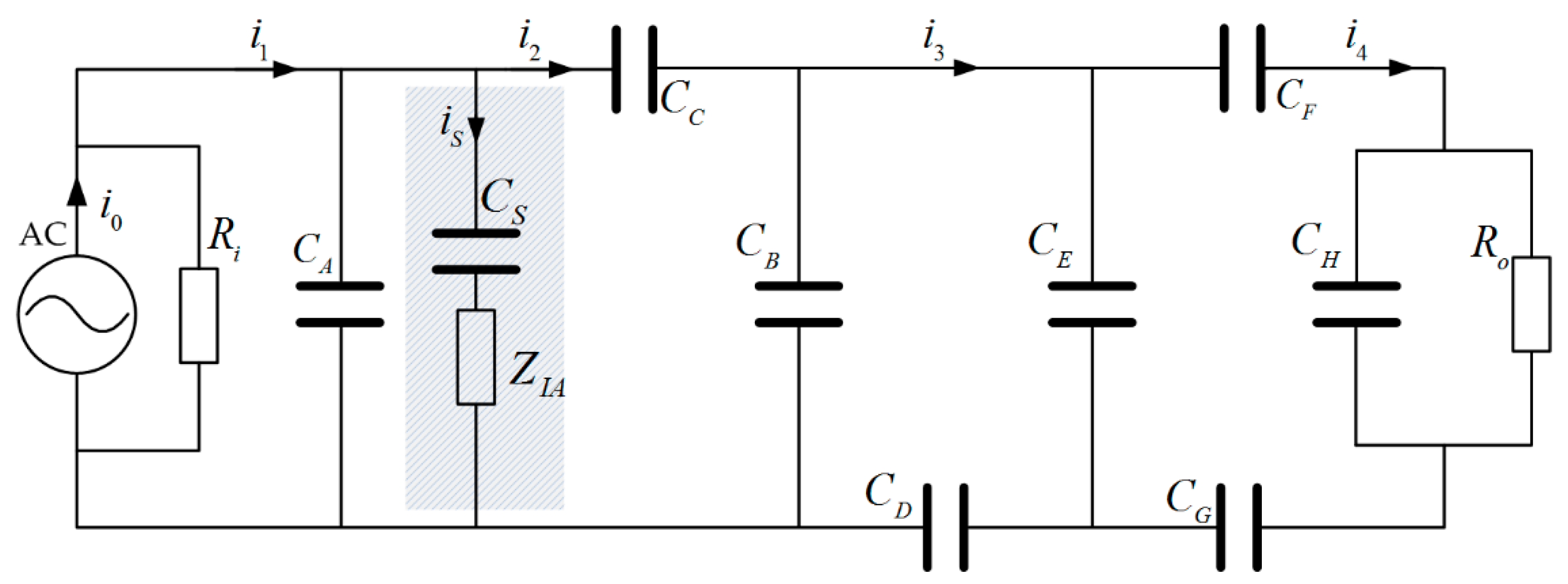
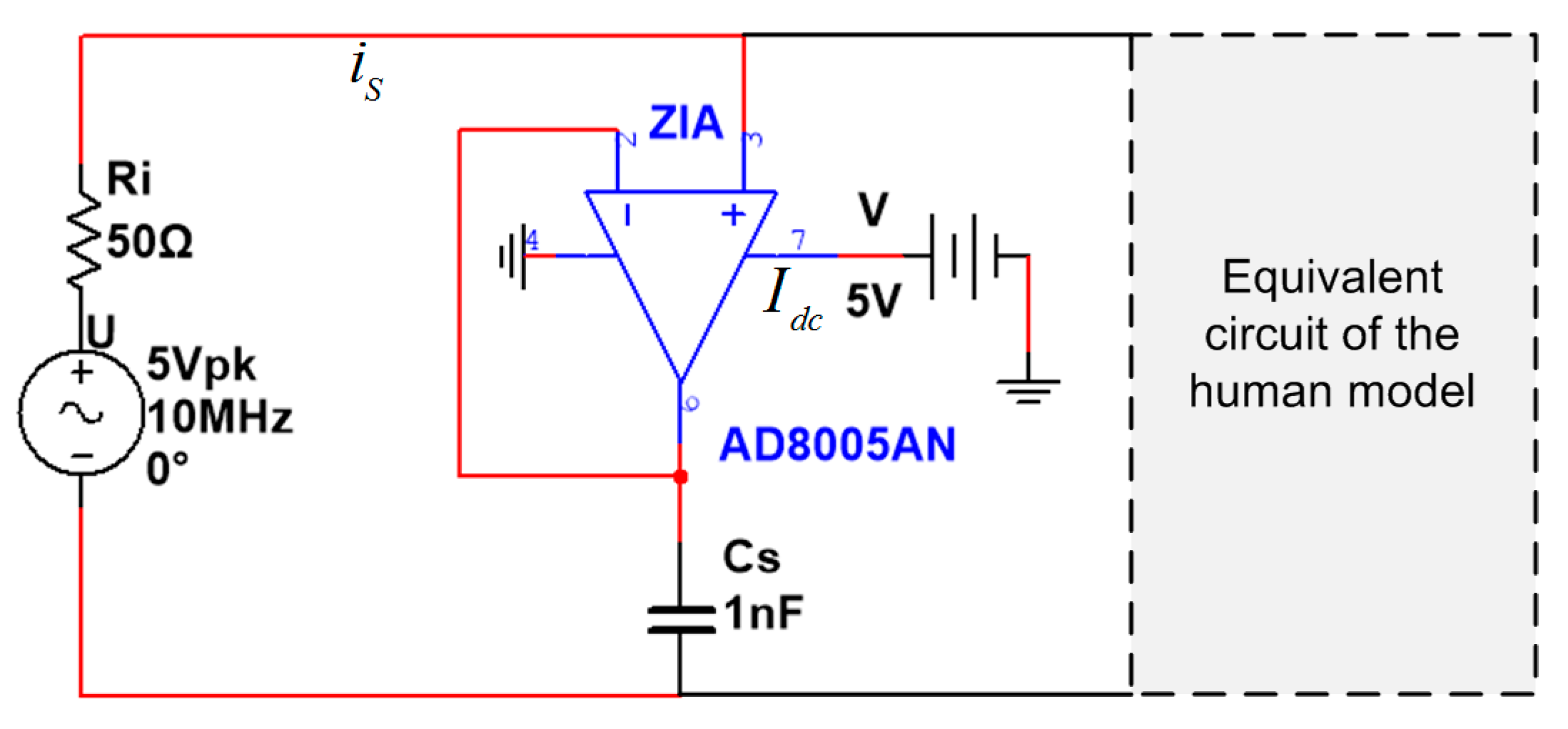


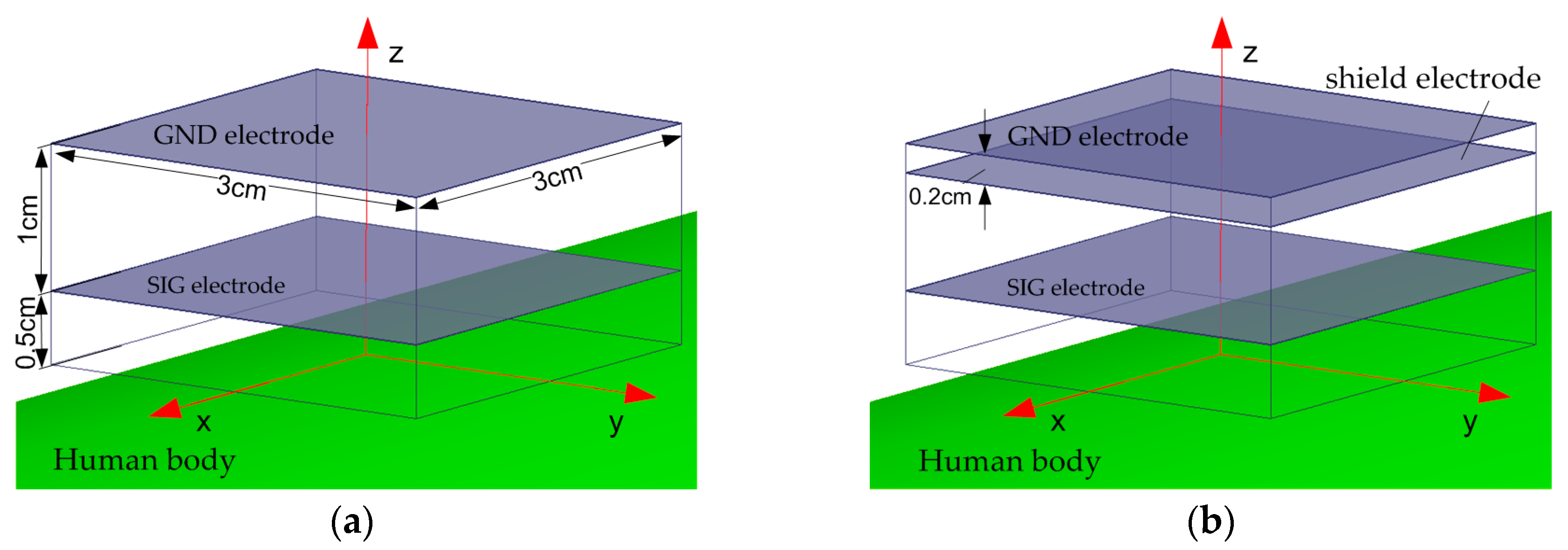

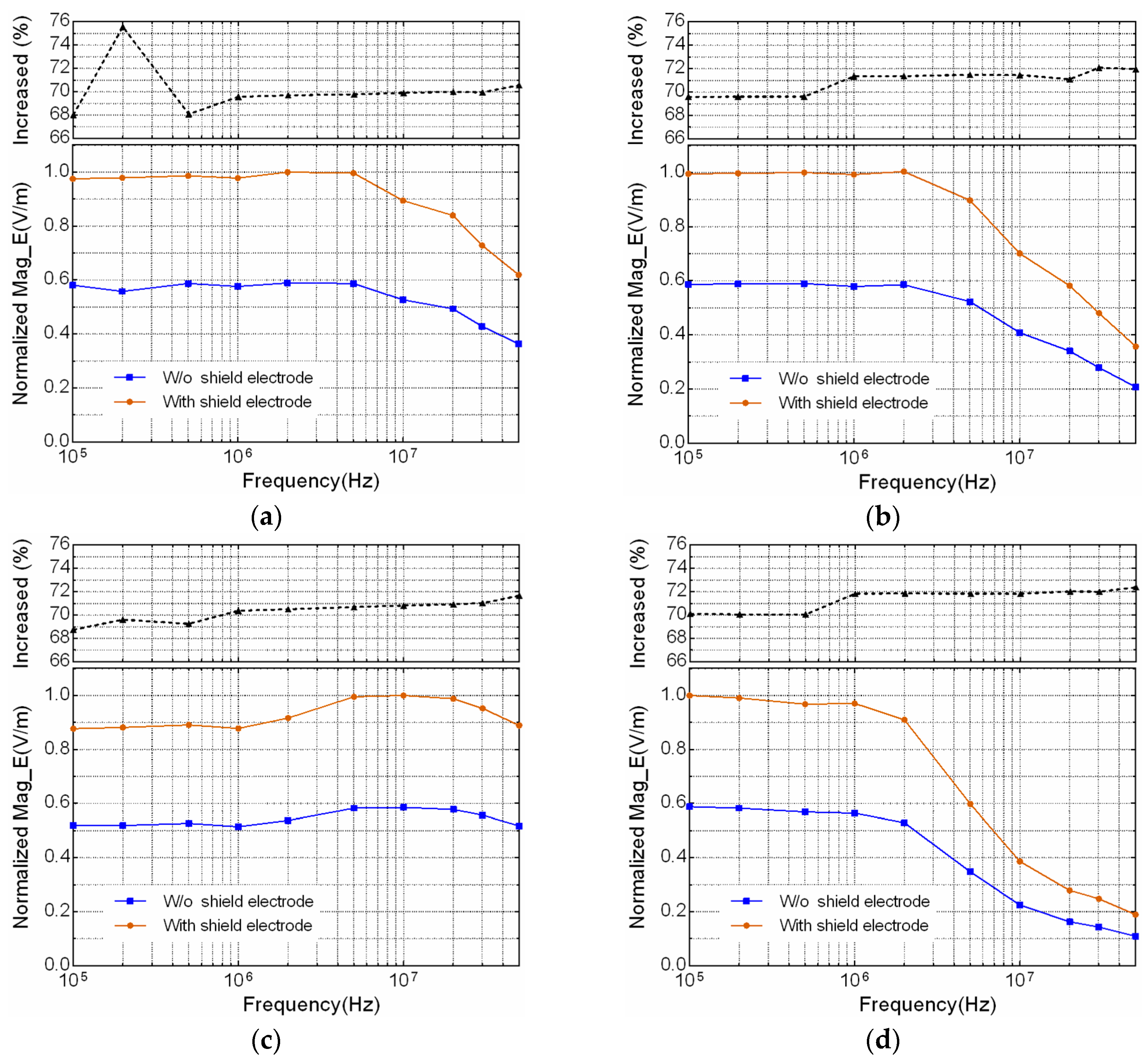
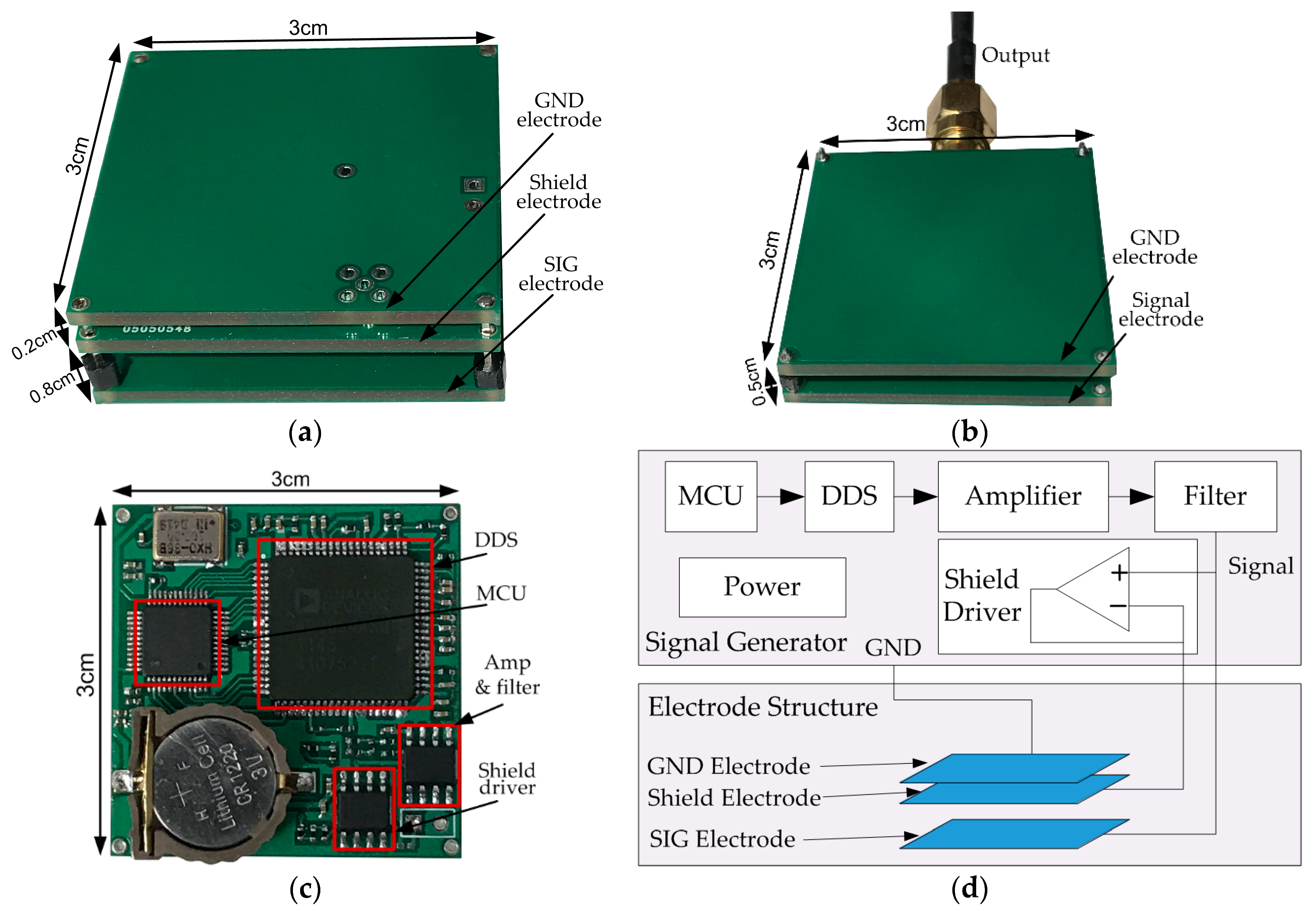
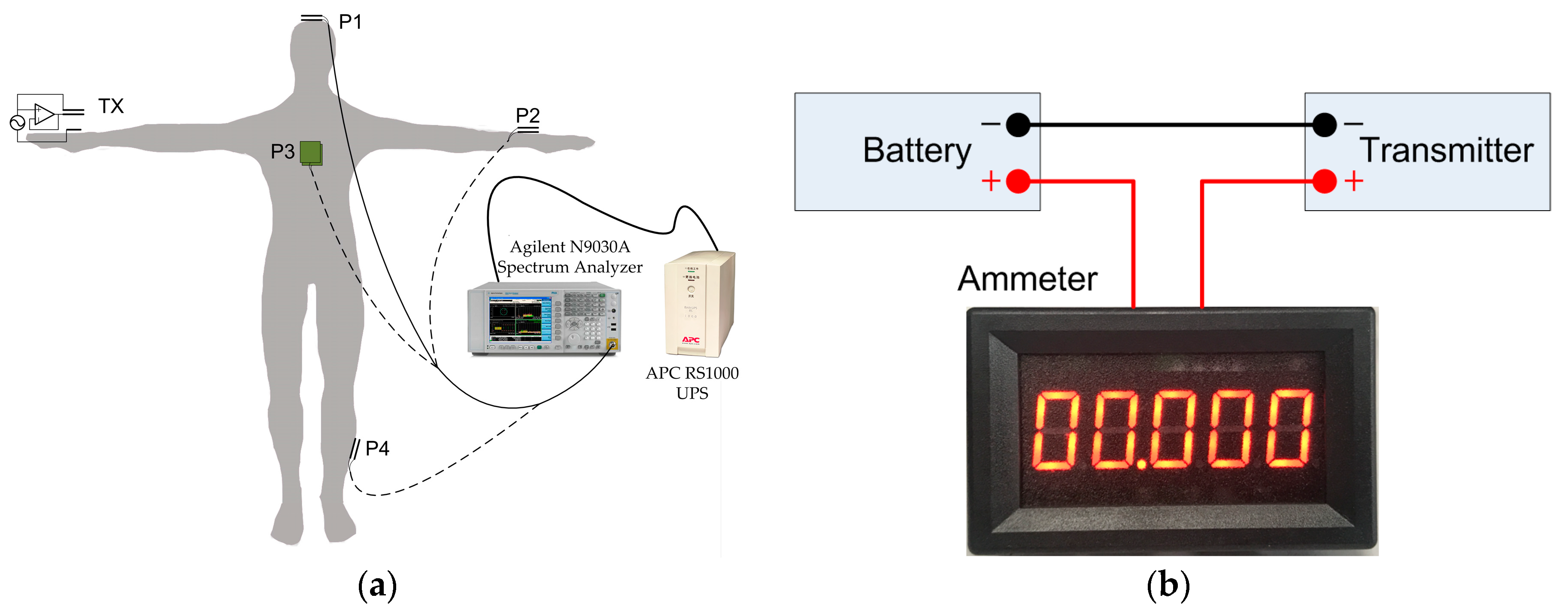
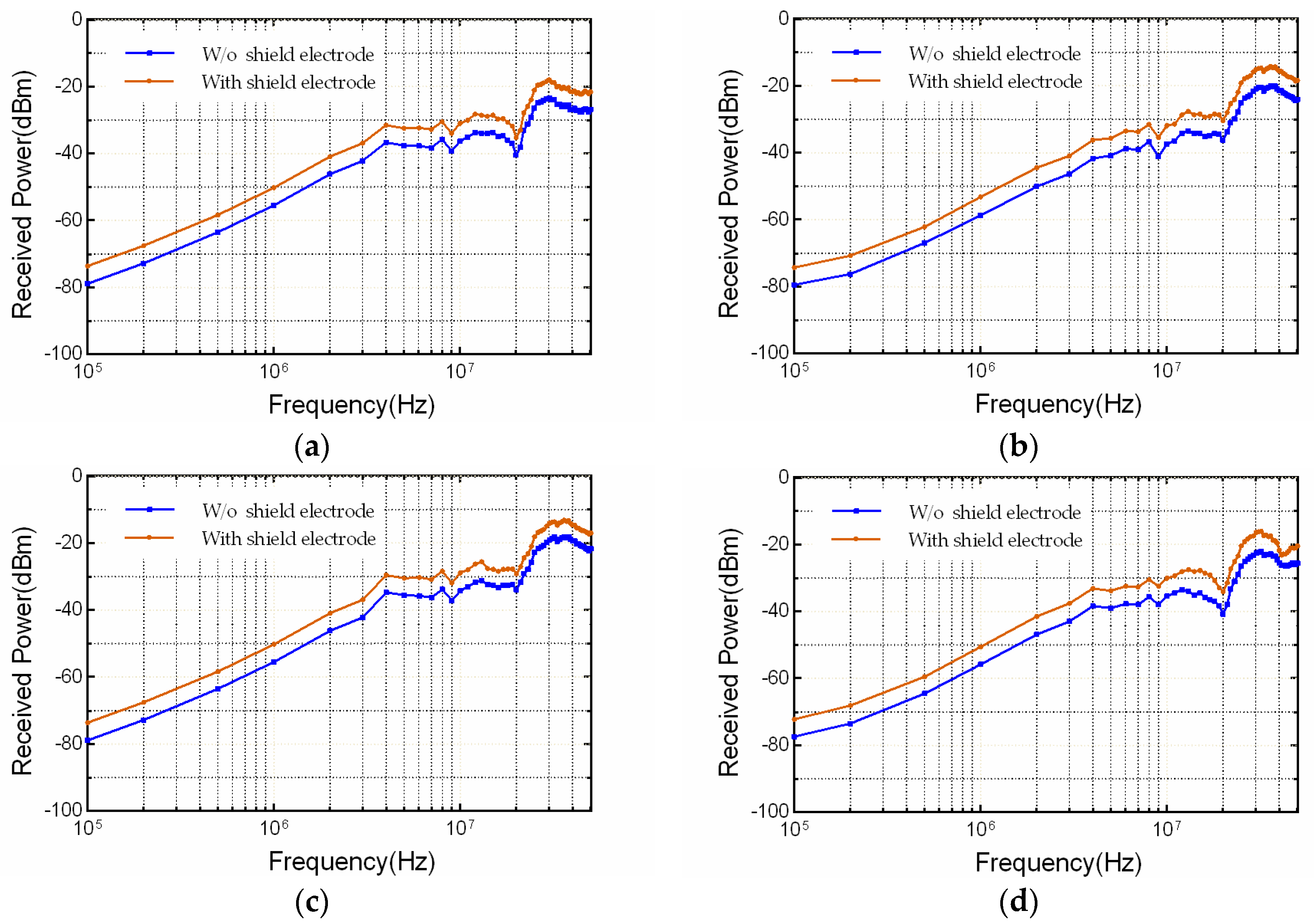
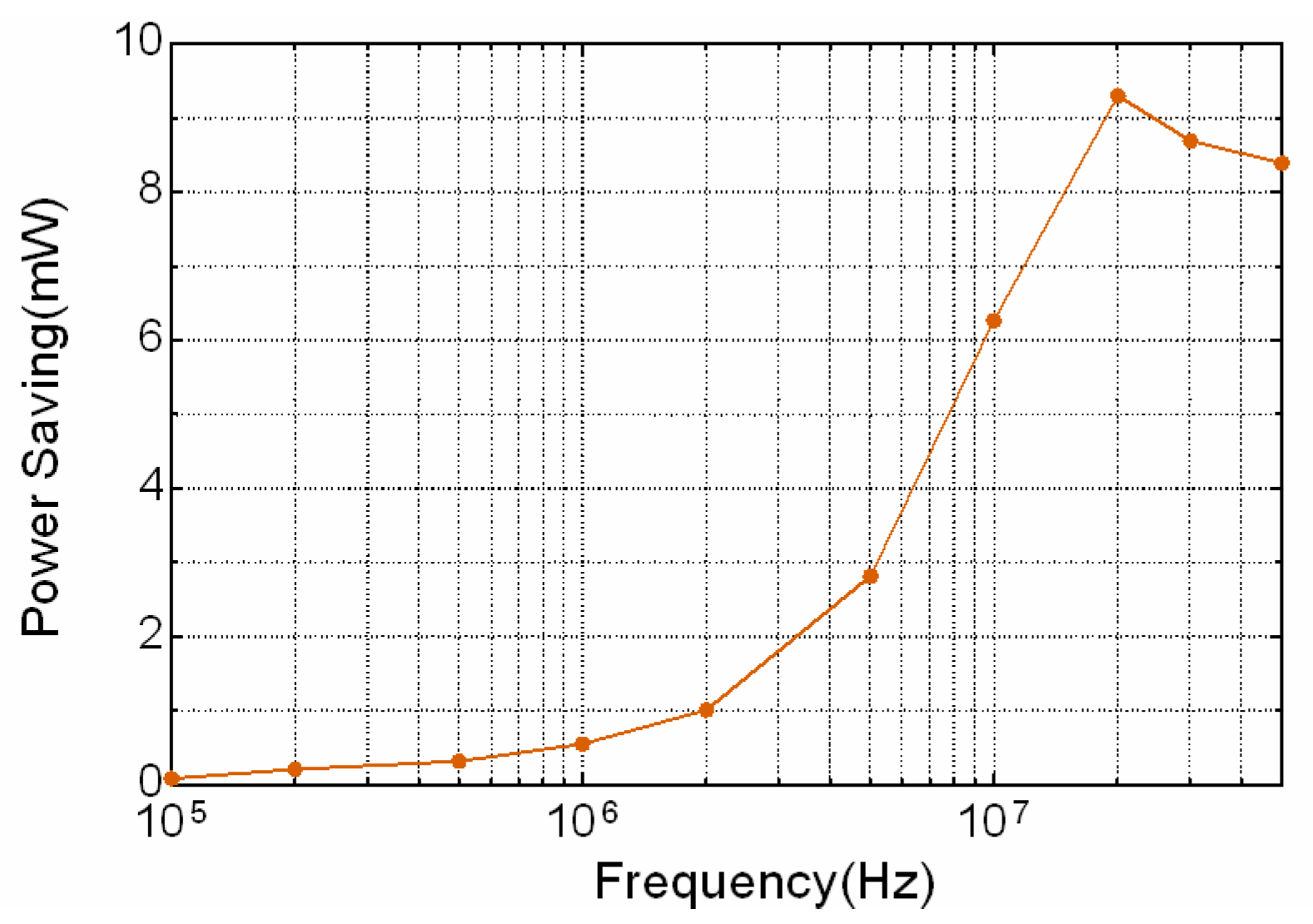
| Arm | Leg | Torso | Head | Neck | |
|---|---|---|---|---|---|
| Skin | 1.26 | 1.26 | 1.26 | 1.26 | 1.26 |
| Fat | 8.74 | 8.74 | 8.74 | 2 | 8.74 |
| Muscle | 28 | 34 | 30 | 2 | 42 |
| Bone | 22 | 26 | 20 | 10 | 23 |
© 2017 by the authors. Licensee MDPI, Basel, Switzerland. This article is an open access article distributed under the terms and conditions of the Creative Commons Attribution (CC BY) license (http://creativecommons.org/licenses/by/4.0/).
Share and Cite
Ma, C.; Huang, Z.; Wang, Z.; Zhou, L.; Li, Y. An Energy Efficient Technique Using Electric Active Shielding for Capacitive Coupling Intra-Body Communication. Sensors 2017, 17, 2056. https://doi.org/10.3390/s17092056
Ma C, Huang Z, Wang Z, Zhou L, Li Y. An Energy Efficient Technique Using Electric Active Shielding for Capacitive Coupling Intra-Body Communication. Sensors. 2017; 17(9):2056. https://doi.org/10.3390/s17092056
Chicago/Turabian StyleMa, Chao, Zhonghua Huang, Zhiqi Wang, Linxuan Zhou, and Yinlin Li. 2017. "An Energy Efficient Technique Using Electric Active Shielding for Capacitive Coupling Intra-Body Communication" Sensors 17, no. 9: 2056. https://doi.org/10.3390/s17092056





